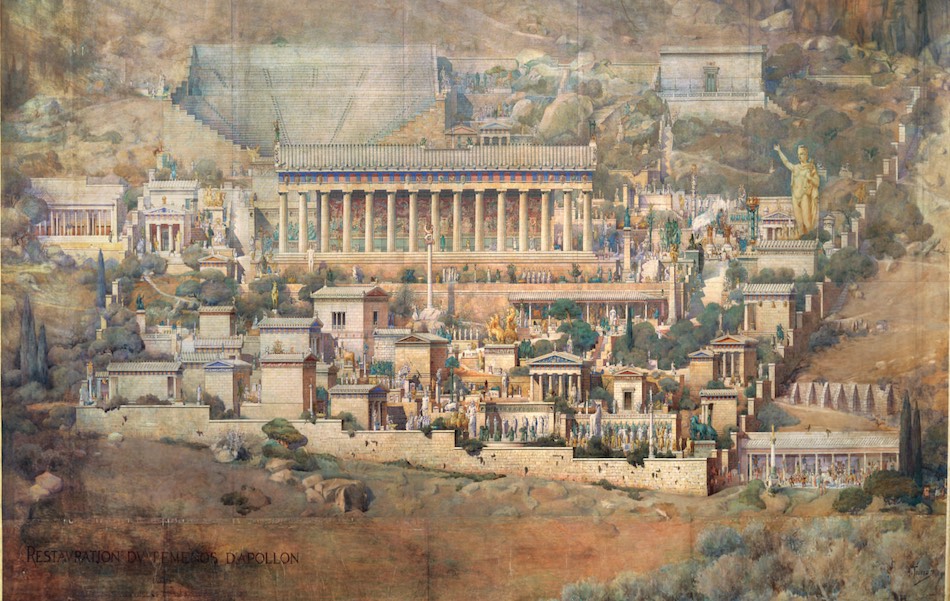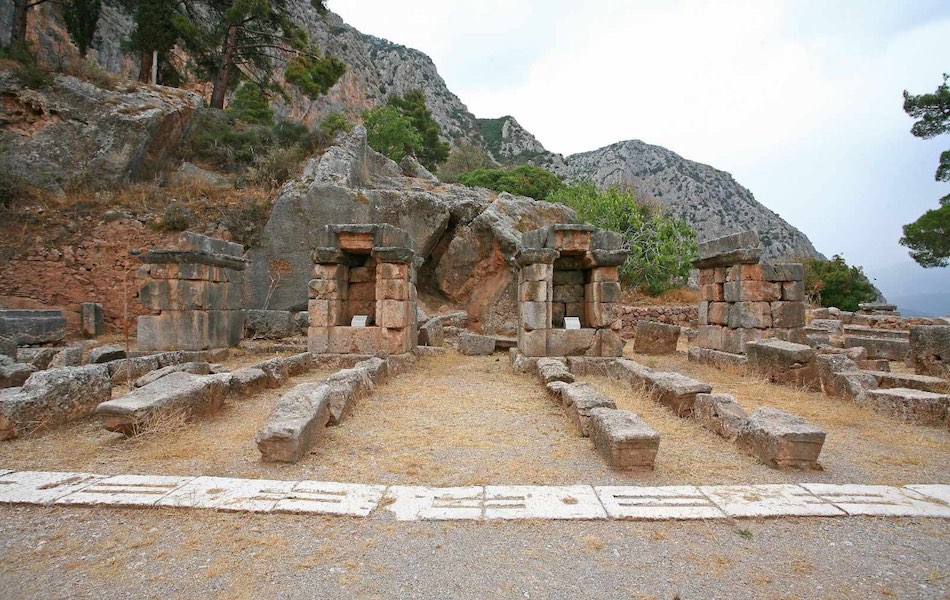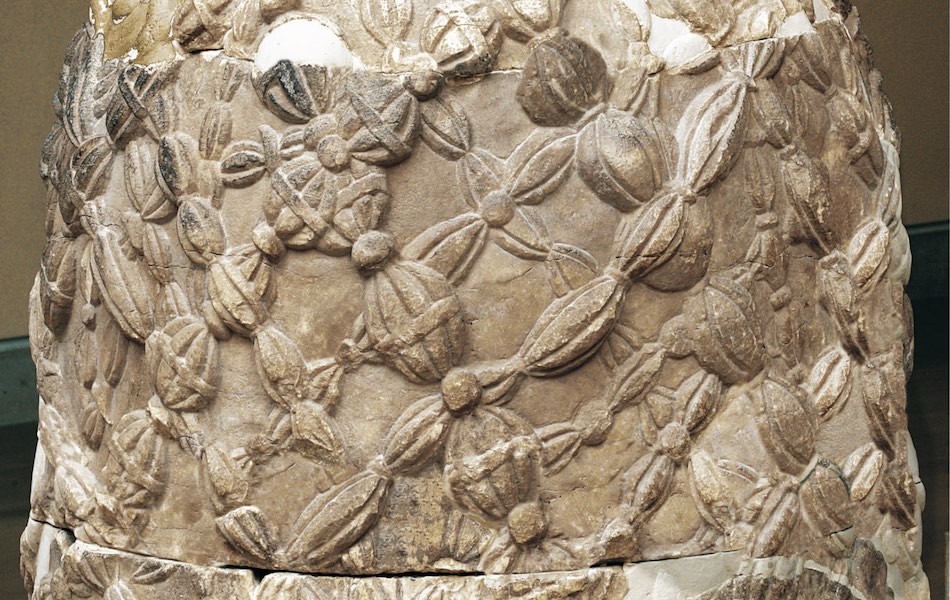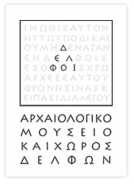The Stadium
Abstract
The stadium of Delphi, situated at the highest spot of the area, must have been built in the second half of the 4th century B.C. or even after the victory against the Galatians. B.C. It was about 178 meters long and on its both sides were raised banks for the spectators, consisting initially of battered earth, later on, though, made of stone and possibly of marble in the Roman period, through a donation by Herod Atticus, according to Pausanias.
Description
The stadium of Delphi is built on the higher point of the area, just above the theatre and between the Phaedriads and the hill of Agios Ilias, to the northwest of the temple of Apollo. Inscriptions attest that it was called “the pythikon stadion”, i.e. the Pythian stadium. The northern side of the stadium lies against the slope, taking advantage of the natural inclination of the ground. The embankments of the southern side are supported by a terrace. It seems that from the time of its construction, dated t the second half of the 4th or the first half of the 3rd century B.C., started taking place there the “gymnastic” contests, i.e. the track and field sports, whereas musical performances or contests must have taken place as well, according at least to a 2nd century B.C. inscription, referring to the performance of a hymn “for the god and the Greeks” by Satyr the Samian with accompanying sounds of the guitar. Ithis site have been discovered traces of 6th century B.C. buildings as well as fountains.
Upon reaching the stadium, on the eastern end of the support wall, one sees an inscription forbidding to take out of the building the wine which was destined for sacrifices. The interpretation of the inscription is somewhat ambiguous, whereas it is not certain that this was its original position.
Τhe Stadium of Delphi, the best preserved stadium in Greece, presents at least four different phases The first one dates to the end of the 4th century B.C. or slightly after the victory over the Galatians, i.e. around 275 B.C., to coincide with the beginning of the celebration of the Soteria. Until then the track sports and the horse and chariot races took place at another site, possibly on the plain below Delphi, whereas workshops seem to have occupied the present site. In its early phase it must have allowed up to 20 athletes to compete simultaneously on the same number of tracks. In its second phase, dating also before the mid-3rd century, the number of tracks was reduce to 17. In both cases the starting points are made of stone, marble initially, limestone later. In ca 100 B.C. were added the spectators’ tiers on the southern side. Finally, what we see today corresponds to the fourth phase of the stadium, comprising the revetment of the spectators’ seats wiith stone. Pausanias mentions that Herod Atticus revetted the tiers with marble, but what we see today is limestone. It seems that an attempt at marble revetment might have been done, but was not completed due to the death of the great sponsor of the arts.
Initially the stadium was 178,35 meters long, corresponding to a Pythian stadium, whereas its width on the eastern end is 25.25 meters, on the west end 24.65 meters and in the centre 28.5 metres. In the Roman period the track was raised and the length was reduced to 177, 414 meters. The embankments were formed along the long sides and met at the semicircular sling. Yet, they didn’t reach up to the spectators’ level, but they stepped on a crepis 1.30 meters high. On the northern side are preseved 12 rows of seats divided by staircases in 12 tiers. The highest corridor is preserved by a wall made of plain rocks, mainly against the rock falls. To the west lies the sling with six rowns of seats, divided in 4 tiers. On the souther side the support walls and the tiers it supported have now collapsed. The total capacity of the stadium was about 6500. On the eastern side is preserved almost intact the starting line, with two rows of slabs bearing incisions for the feet of the runners and with rectangular cavities for supporting the hysplinx. To the east of the starting line have been discovered four pillars which supported the monumental entrance.
The stadium was abandoned in 394 A.D. Cyriacus of Ancona writes that, when he visited Delphi in 1438, the stadium was almost intact. However, years passed by and it was covered with earth and used as a pasture. Thus, Leake wrote that during his own visit, only the upper row of benches was visible.
MUSEUM OF DELPHI









